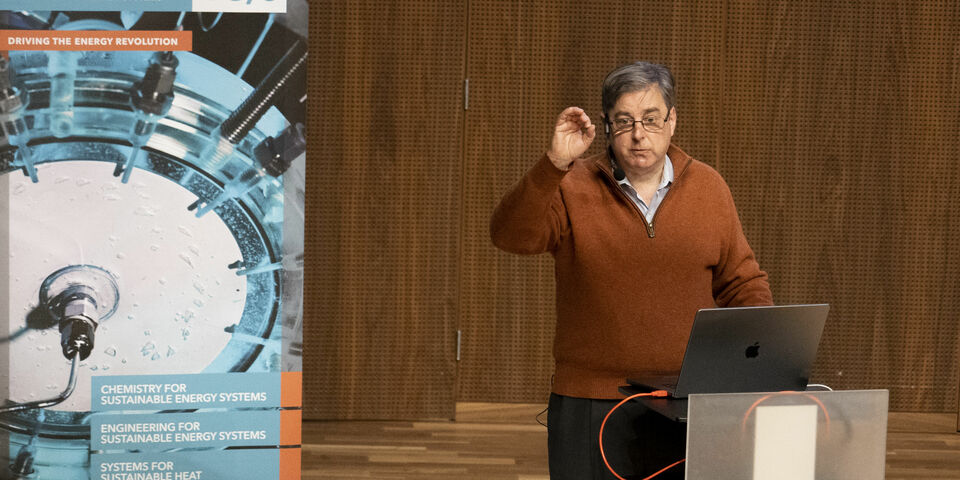“Bioenergy is not carbon neutral”
The EU wants to cut emissions by at least 55% by 2030. To make that happen it’s working on a so-called “Fit for 55 package”: a set of proposals to update EU legislation. In all the proposed laws bioenergy is considered as carbon neutral. But in reality it’s far from it, says Timothy Searchinger, Senior Research Scholar at Princeton University's Center for Policy Research on Energy and the Environment. Last Friday he gave an EIRES lecture on campus about the implications of the Fit for 55 package on land use, climate change, and biodiversity.
Searchinger starts his lecture mentioning how appropriate the name of the Corona hall seems: “It’s the first in-person talk I have given in the last two years.” About thirty people came to listen to him on campus. Others are watching from their screens at home. The researcher tells them about the big challenge that lies ahead: how do we feed the world, without destroying the world?
By 2050 the world will be inhabited by about 10 billion people, who all need food, a place to live and other resources. Land is needed to produce all that’s necessary, but if we want the world to be habitable, we also need that land for forests to absorb CO2 and natural areas for biodiversity, Searchinger explains. Climate strategies rely on reducing agricultural land area and with the right policies, doing that in Europe should be possible, he continues.
Fit for 55
What Europe plans to do with the available land in the Fit for 55 package, is to dedicate a big part of it (22 million hectares) to energy crops. “That means that a fifth of Europe’s cropland would be devoted to bioenergy”, Searchinger says. And according to him that would not be beneficial for the climate.
The main problem is in how in all the proposed laws bioenergy is considered as carbon neutral, he says. The reason it is considered as carbon neutral, is because next to emitting carbon dioxide when burning the crops, growing them absorbs carbon dioxide. It is portrayed as a recycling process. But in reality bioenergy is not carbon neutral at all, Searchinger explains. “Bioenergy is more or less the least efficient technology for energy anyone could possibly dream of.”
Ethanol
To illustrate what he means, he shows a graph on the big screen behind him. In the graph the greenhouse gas emissions of gasoline are compared to those of EU Ethanol, which is renewable biofuel. It shows that the ethanol actually gives an increase of greenhouse gas emissions. But because of the plant growth in the process of producing it, a credit is assigned that cancels out the emissions, Searchinger says. “What’s wrong with that? Well, last time I looked. It takes land to grow plants. Where’s the cost of land in this calculation?”
The cost in this case is an opportunity cost, he explains. “It means that, from a climate perspective, you wouldn’t get any benefit from using the land any other way. Well, how could we use it? We could grow forests, we could preserve forests and we could grow food and therefore avoid cutting down other forests.” Comparing biofuel with fossil fuel as an example doesn’t mean there aren’t any alternatives, Searchinger stresses. “On at least 75 per cent of the world’s land, you would get a hundred times more useable energy using a solar technique, than using bioenergy.”
Free
Why is the use of bioenergy still considered as an option in the Fit for 55 package, then? That’s because by treating the land as free and not considering other uses for that land, they are making an unfair comparison, the researcher says. To fix this, according to him the EU should properly account for the carbon impact of bioenergy. “They should include a carbon opportunity cost in some way.”
Also, Europe should not get credits for outsourcing land, policies should be made to increase yields and reduce consumption and suppliers should be supported in increasing yields without increasing land area demands, Searchinger says. “Like everybody, Europe has to play a big part in the solution. Land is scarce.”


Discussion